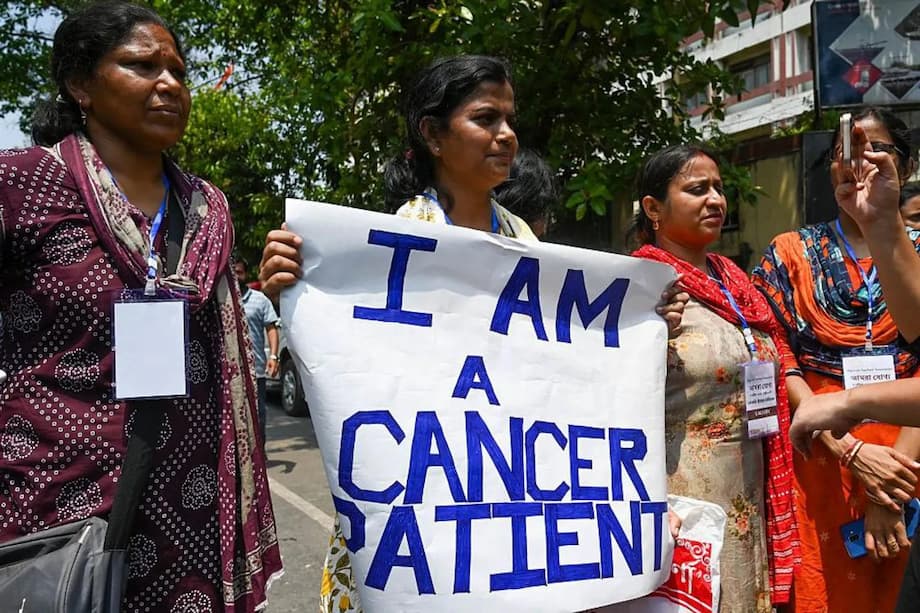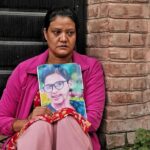A paradox in India’s cancer burden
India’s latest cancer registries reveal a striking pattern. Women are slightly more likely to be diagnosed with cancer, while men are more likely to die from it. Between 2015 and 2019, women accounted for 51.1 percent of cases recorded by population based cancer registries, yet men accounted for 55 percent of deaths. For 2024, researchers estimate about 1.56 million new cases and 874,000 deaths nationwide. In plain terms, incidence, the rate of new diagnoses, leans higher in women, while mortality, the rate of deaths, tilts toward men.
- A paradox in India’s cancer burden
- What the latest registries reveal
- Risk factors that drive the gender split
- A map of unequal risk across India
- Inequality, gender roles, and care seeking
- Screening, vaccination, and early detection
- Closing the survival gap for men
- Data quality and what it means
- What to Know
This pattern sets India apart from the global picture. Worldwide in 2022, roughly 197 people per 100,000 were diagnosed with cancer. The average was higher for men at 212 per 100,000 and lower for women at 186 per 100,000. In countries like the United States, lifetime risk is close to equal for men and women. India is different, and the reasons for this lie in the mix of cancers that each sex most often develops, how early those cancers are detected, and the care pathways that follow.
Among Indian women, breast, cervical, and ovarian cancers dominate, together making up about 40 percent of female cases. These cancers tend to be more amenable to screening, which helps detect disease earlier and improves survival. Among Indian men, oral and lung cancers are prominent, along with prostate cancer. Oral and lung cancers are strongly linked to tobacco and alcohol, tend to be more aggressive, and are often diagnosed late. Men are also less likely to seek routine checkups or present early with symptoms, which worsens outcomes.
How can incidence be higher in women and mortality higher in men?
The answer rests on two main drivers. First, the cancer type mix differs by sex. Breast and cervical cancers, the leading cancers in women, usually offer an earlier window for detection and respond relatively well to timely treatment. Oral and lung cancers, more common in men, often appear at advanced stages and carry poorer survival rates. Second, health system contact differs. Women typically engage with healthcare during reproductive years. This increases the chances that screening or incidental findings will identify disease earlier. Many men have fewer touchpoints with the system and may delay care because of work, stigma, or a tendency to minimize early symptoms.
Public awareness also differs by cancer type. Dedicated programs and campaigns around breast checks, cervical screening, and HPV vaccination have grown in reach. By comparison, the conversation around men’s cancers usually centers on tobacco and oral lesions. There is less emphasis on systematic early detection for lung cancer and fewer routine pathways that bring men into preventive care. The result is more late-stage diagnoses and higher mortality among men.
What the latest registries reveal
The National Centre for Disease Informatics and Research and the Indian Council of Medical Research compiled data from 43 population based registries, representing diverse regions and communities. In the five year period from 2015 to 2019, those registries recorded more than 700,000 cases and over 200,000 deaths. Using these data to model national totals, researchers estimate 15.6 lakh new cases and 8.74 lakh deaths for 2024. The projected lifetime risk of developing cancer in India is about 11 percent.
The leading cancers differ by sex. For men in 2024, oral cancers are expected to account for more than two lakh cases, followed by lung and prostate cancers. For women, breast cancer tops the list with roughly 2.38 lakh cases, followed by cervical and ovarian cancers. Oral cancer has overtaken lung cancer as the most common cancer in men in several registries, a shift that reflects both the stubborn effects of tobacco exposure accumulated over many years and concurrent risks such as alcohol use and areca nut chewing.
Regional differences are stark. The northeast remains the country’s cancer hotspot. Districts such as Aizawl in Mizoram and Papumpare in Arunachal Pradesh report lifetime risks that are far above the national average. Delhi has the highest case numbers among metro cities, while recent figures show notable rises in Ahmedabad. Several urban centers, including Hyderabad, Delhi, Bengaluru, and Chennai, stand out for high breast cancer incidence among women.
Risk factors that drive the gender split
Cancer reflects a long chain of exposures that accumulate over many years. Some are biological and tied to sex and hormones. Others involve social factors, environment, and lifestyle. In India, the mix of risks produces different patterns in men and women.
Tobacco and alcohol
Tobacco remains the single largest driver of preventable cancers in India. Studies of registry data show that tobacco related cancers make up about 40 to 50 percent of all cancers in men and around one fifth in women. The burden includes cancers of the oral cavity, tongue, pharynx, larynx, lung, esophagus, and urinary bladder. Patterns of use vary by region. In parts of Assam and neighboring states, chewing tobacco is common. In Mizoram and nearby districts, smoking is more prevalent. Many users consume areca nut with slaked lime, which raises oral cancer risk even without tobacco. Heavy alcohol use multiplies risk further, especially for oral and upper digestive tract cancers.
The share of tobacco related cancers has fallen in some cities since the 1990s, likely reflecting prevention gains and changing habits, yet the absolute burden remains high. Passive exposure is still common at home and in workplaces. Many men first present only when a mouth sore fails to heal or when a cough and weight loss become severe, which often indicates advanced disease.
Hormones, reproductive patterns, and lifestyle
Breast and ovarian cancers are influenced by hormones. Shifts in reproductive patterns have altered risk. Later first pregnancies, fewer children, shorter or no breastfeeding, and older age at menopause contribute to a higher lifetime exposure to estrogen and progesterone. Rapid urbanization, sedentary living, and higher rates of obesity also raise risk, as do diets rich in processed foods. Women’s exposures to cosmetics and personal care products that may contain endocrine disrupting chemicals have been flagged as a possible contributor, although measuring that effect is complex.
Infections add to risk as well. Cervical cancer is linked to persistent infection with human papillomavirus, which is preventable through vaccination and screening. Helicobacter pylori infection raises stomach cancer risk in some communities. Hepatitis B and C increase liver cancer risk.
Biology and sex differences
Biology matters. Across many cancers worldwide, men have higher incidence than women. A clear example is bladder cancer, where men face roughly four times the incidence seen in women. Yet women with bladder cancer often present with higher grade disease and worse outcomes. Differences in immune response, hormone receptor signaling, and genetic and epigenetic changes help explain part of the gap, while delays in referral and diagnosis also play a role. These biological patterns do not wholly determine outcomes, but they shape how cancers arise and progress in men and women.
A map of unequal risk across India
Geography shapes cancer in India. The northeast reports the highest incidence in the country. Aizawl, East Khasi Hills, and Papumpare have age adjusted rates and lifetime risks far above national levels, with men in some districts facing a lifetime risk above 21 percent and women above 18 percent. Tobacco use in smoked or chewed forms is widespread, alcohol is commonly consumed, and areca nut chewing is embedded in local culture. Food practices, including smoked and salted meats and fermented products, may also add risk. Infections, including HPV and Helicobacter pylori, likely contribute to site specific burdens.
Beyond the northeast, patterns vary. Srinagar tops lung cancer incidence among men. Hyderabad reports the highest breast cancer incidence among women. Ahmedabad has seen a rise in oral cancers among men. Delhi records the highest number of cases among major cities. Air pollution, occupational exposures, and crowded urban living complicate the picture, especially for respiratory cancers. Rapid changes in lifestyle and diet are shifting risks in many large cities and peri urban areas.
Cities and access to care
Incidence often appears higher in cities because diagnosis is more accessible. Urban residents can more readily obtain imaging, biopsy, and specialist consultations. Rural residents may face long travel, out of pocket costs, and delays that suppress measured incidence while raising the share of advanced disease. Many patients eventually travel to metro centers for definitive treatment, which can create an impression that cities carry more of the burden. The reality is often a function of access as much as biology or environment.
Inequality, gender roles, and care seeking
Gender norms and social inequalities influence who gets care and when. Men may delay seeking help because they fear loss of wages or view checkups as unnecessary. Women often touch the health system through reproductive care, yet social constraints can still delay diagnosis and treatment. Evidence from pediatric oncology is sobering. Records from a major cancer center in Mumbai show that, over a decade, only one girl received treatment for every two boys. That ratio points to deep seated biases in how families make decisions about which child receives care.
Experiences from low income women highlight the social side of the cancer crisis. Medical anthropologist Cecilia Van Hollen documented the voices of Dalit women in Tamil Nadu who link rising cancer to poverty, chemicals in food and fields, and the stresses of hard labor and drought. One elderly Dalit woman, speaking during that fieldwork, captured the sense of injustice many felt.
“Cancer is a sign of the Kali Yuga. It has come because of the way we live, because of agricultural chemicals in our food, and lack of work.”
Stigma compounds delay. Some women worry that a breast lump will be seen as shameful or that cervical disease will be blamed on morality. Others describe misdiagnosis or brusque treatment in crowded facilities. These testimonies echo a central truth of public health. Biology and behavior matter, but social position, income, education, caste, and gender expectations often decide who reaches care in time and who does not.
Screening, vaccination, and early detection
Prevention and early detection save lives. Cervical cancer is largely preventable through HPV vaccination and regular screening. India’s indigenous HPV vaccine, Cervavac, makes broad vaccination more feasible. Organized screening with visual inspection or Pap testing can catch pre cancerous changes early, allowing timely treatment. Expanding these programs, especially in low resource settings, could prevent thousands of deaths.
Breast cancer survival rises sharply when cancer is found early. In many countries, early stage breast cancer carries a five year survival above 90 percent. In India, many women still present at stage 3 or 4, when survival drops steeply. Wider use of clinical breast examination by trained providers, targeted mammography for eligible age groups, and faster referral pathways can shift diagnoses toward earlier stages. Technology can help, but the most important steps are awareness, access, and streamlined systems that do not lose patients to follow up.
Oral cancer offers one of the most practical screening opportunities for men at high risk. Trained health workers can perform a visual exam of the mouth, detect precancerous patches and early lesions, and refer for prompt treatment. Integrating oral checks into primary care, dental visits, and workplace programs can identify disease before it becomes advanced. For lung cancer, low dose CT screening is effective for defined high risk groups in some countries, but it requires resources and careful implementation. India can pilot targeted approaches for very high risk populations while strengthening community programs that prompt earlier evaluation of persistent cough, weight loss, or chest symptoms.
India has already launched important system level responses. The National Programme for Prevention and Control of Cancer, Diabetes, Cardiovascular Diseases and Stroke supports screening and awareness for oral, breast, and cervical cancers. The Strengthening of Tertiary Care for Cancer scheme has expanded State Cancer Institutes and Tertiary Cancer Centres. The National Cancer Grid links more than 280 centers to standardize care. Public financing under Ayushman Bharat gives poor families access to cancer treatment, and new day care cancer centers are planned to bring services closer to patients. Research advances, including indigenous CAR T cell therapy, signal a growing science and innovation ecosystem.
Closing the survival gap for men
India can reduce male mortality by tackling tobacco and alcohol more aggressively and by expanding practical early detection. Stronger enforcement of tobacco control laws, higher excise taxes, vendor licensing, restrictions on marketing of areca nut products, and robust cessation services can curb initiation and support quitting. Workplace and community programs that pair tobacco cessation with routine oral examinations are especially valuable for men in high risk occupations.
Primary care teams can use simple algorithms to flag red flags in men, such as non healing mouth ulcers, hoarseness, or long lasting cough, and route them quickly to diagnostics. Integration with tuberculosis programs can help, since chronic cough already triggers evaluation at the primary care level. Where feasible, low dose CT screening can be piloted for carefully defined high risk groups, guided by clinical specialists and local capacity. Improving health seeking behavior among men will require attention to norms and practical barriers. Paid time off for screening, mobile units at worksites, and messaging that frames health checks as an act of responsibility can all help.
Data quality and what it means
India’s cancer registries cover roughly 10 to 18 percent of the population and vary by region. Not all states have equal coverage, and urban areas are often better represented. The registries excluded 2020 data because pandemic disruptions affected reporting. National totals are modeled from the registry base. Even with these limits, the trends are consistent, and the broad patterns, higher female incidence and higher male mortality, are robust. Expanding registry coverage, digitizing pathology and imaging reports, and linking hospital records will improve accuracy and timeliness.
What to Know
- Women account for a slightly higher share of cancer diagnoses in India, while men account for a higher share of deaths.
- Breast and cervical cancers drive female incidence and are more amenable to early detection and treatment, which lowers mortality.
- Oral and lung cancers dominate in men and often present late, which raises mortality.
- The northeast has the highest incidence, with districts like Aizawl and Papumpare far above national averages.
- Tobacco related cancers remain a large share of the male burden and a significant share among women.
- HPV vaccination and cervical screening can prevent many deaths, while oral checks can catch early disease in high risk men.
- Health system initiatives are scaling up screening, treatment, and financial protection, but access and equity gaps persist.
- Better data coverage and earlier care seeking, especially among men, can narrow the survival gap.












